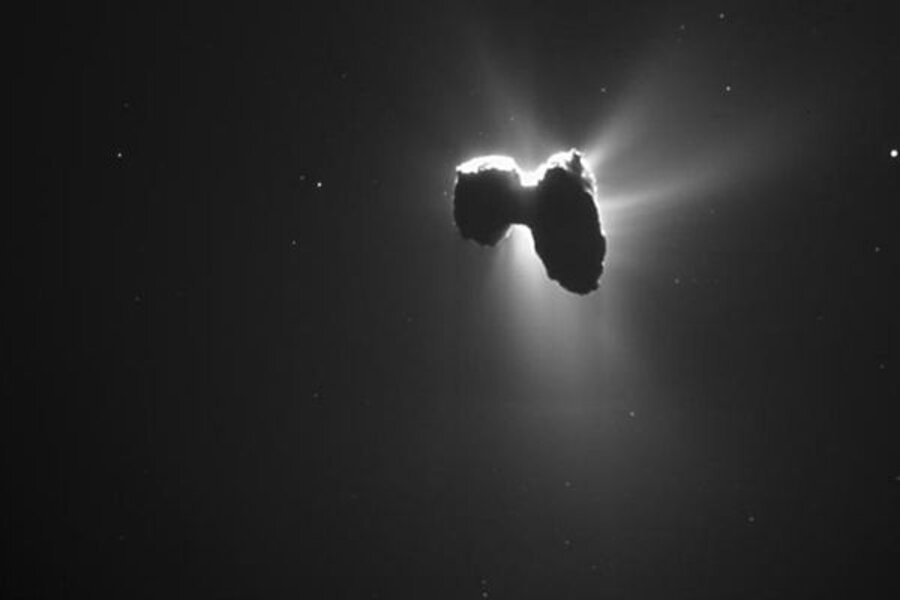Glycine found near Rosetta: Did life on Earth begin with a comet?
Did the building blocks of life come to Earth from outer space? Maybe, say scientists.
The Rosetta spacecraft has spotted an amino acid and some other key ingredients of proteins in and around the comet it has been orbiting since 2014.
"This is the first unambiguous detection of glycine at a comet," says Kathrin Altwegg, principal investigator of the ROSINA instrument that made the measurements, and lead author of the paper published in the journal Science Advances on Friday.
The researchers behind the European Space Agency's spacecraft said it had repeatedly detected the amino acid glycine, along with some organic molecules and phosphorus, used by living organisms to make proteins, in the cloud of gas and dust surrounding Comet 67P/Churyumov-Gerasimenko.
The presence of these protein ingredients “supports the idea that comets delivered key molecules for prebiotic chemistry throughout the solar system and, in particular, to the early Earth,” Dr. Altwegg and her colleagues in their study.
They first detected the components in October 2014, while Rosetta was just 10 kilometers (6 miles) from the comet. They made a similar detection in March 2015, during a flyby, when Rosetta was 30–15 km from the nucleus of the comet, they said.
Scientists have long speculated about the contributions of comets and asteroids to life on Earth. Some have theorized that comets and asteroids carrying organic molecules crashed into the oceans on the Earth early in its history.
But this marks the first time that scientists have directly detected key organic compounds in a comet's coma.
In 2006, astronomers detected similar components on comet Wild–2, but the samples had landed in the Utah desert, so the scientists couldn't prove that the ingredients for life hadn't contaminated the bolide after impact.
"Having found glycine in more than one comet shows that neither Wild-2 nor 67P are exceptions," said Altwegg.
Glycine is a simple amino acid, one of the pieces needed to build proteins, while phosphorus is an essential ingredient for DNA.
"Glycine is the only amino acid that is known to be able to form without liquid water," explained Altwegg in a press release, "and the fact we see it with the precursor molecules and dust suggests it is formed within interstellar icy dust grains or by the ultraviolet irradiation of ice, before becoming bound up and conserved in the comet for billions of years."
As she told Space.com, "With all the organics, amino acid, and phosphorus, we can say that the comet really contains everything to produce life – except energy."
She continued, "Once you have the comet in a warm place – let's say it drops into the ocean – then these molecules get free, they get mobile, they can react, and maybe that's how life starts."
Comets contain clues to the earliest days of the solar system, said co-author Hervé Cottin.
"Comets have not really changed in 4.5 billion years," he explained. "They grant us direct access to some of the ingredients that likely ended up in the prebiotic soup that eventually resulted in the origin of life on Earth."









